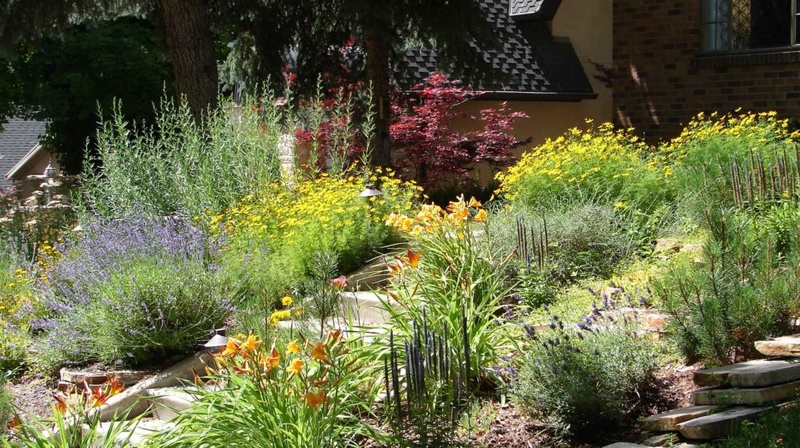
Celebrate Earth Day with Florida Friendly Landscaping
Celebrate Earth Day with a commitment to practicing Florida-Friendly Landscaping. Apply these nine principles to your property to positively impact our state’s natural resources, residents, and wildlife. Plant selection and placement, watering and fertilization practices, pest management, and more are critical in protecting our precious environment.
In honor of Earth Day on April 22, homeowners across Florida can take steps toward more environmentally responsible landscaping. Our landscaping practices can impact the well-being of the state’s wildlife, residents, water, and land.
Follow the nine principles of Florida-Friendly Landscaping to do your part in protecting Florida’s resources.
1. Right Plant, Right Place
When adding to your landscape, start by assessing your planting sites’ sunlight, soil, and water conditions. Select as many native plants as possible and match plant requirements with site conditions. Native plants are already accustomed to the climate and thus require less fertilizer and water (and money) to thrive. Following this principle is a significant step toward a low-maintenance and healthy landscape.
2. Water Efficiently
The second principle emphasizes the importance of running an efficient irrigation system. While ensuring your sprinklers aren’t watering paved areas like walkways and driveways is part of this step, there’s more to efficient watering than sprinkler settings. Monitor garden beds and turfgrass, especially through season changes, and water only when needed. Efficient watering helps to prevent runoff of fertilizers and pesticides, lower your utility bill, keep your plants healthy, and conserve this essential natural resource.
3. Fertilize Appropriately
Using the wrong fertilizers, overfeeding, or fertilizing at the wrong time of year can cause damage to plants and have negative environmental repercussions. Make sure to research the fertilization needs of your plants and turfgrass, and always follow the label instructions before applying.
4. Mulch
Mulch serves multiple purposes in a Florida-Friendly landscape. It contributes to water conservation by retaining soil moisture and keeping the soil cool. Mulch helps control weeds and can be used instead of turfgrass in shaded areas or those that are difficult to mow.
5. Attract Wildlife
A landscape with a wildlife presence is a healthy landscape. Certain insects and critters serve as natural pest control, and bees and butterflies play a critical role as pollinators. Incorporate shelter into your property with bushes and rocks, provide a birdbath or small pond as a water source, and plant a pollinator garden for bees and butterflies.
6. Manage Yard Pests Responsibly
The presence of pests does not necessarily require pesticides. This principle encourages Florida homeowners to employ natural and preventative pest control methods. Choose native, pest-resistant plants and install them in appropriate locations. Hand-pick pests upon spotting them, and if pesticides are called for, use low-toxic options like pesticidal soap or horticultural oils.
7. Recycle Yard Waste
Instead of adding yard waste to your garbage cans, use cuttings, leaves, pine needles, and clippings as compost or mulch. Set aside yard waste for an organized city pick-up day so that it can be used to make compost for the community.
8. Reduce Stormwater Runoff
Prevent the runoff of debris, soil, and pollutants by retaining irrigation and rainwater on your property. Install berms and rain gardens, replace concrete walkways with mulch and porous pavers, and use collected rainwater for irrigation.
9. Protect the Waterfront
Florida is home to numerous lakes, freshwater springs, rivers, and streams, and boasts the second-longest coastline in the U.S. If you live on a waterfront, designate a 10-foot zone to be maintenance-, fertilizer-, and pesticide-free, and fill this space with Florida-Friendly plants. This zone will help to prevent runoff and pollution from entering the waterway.